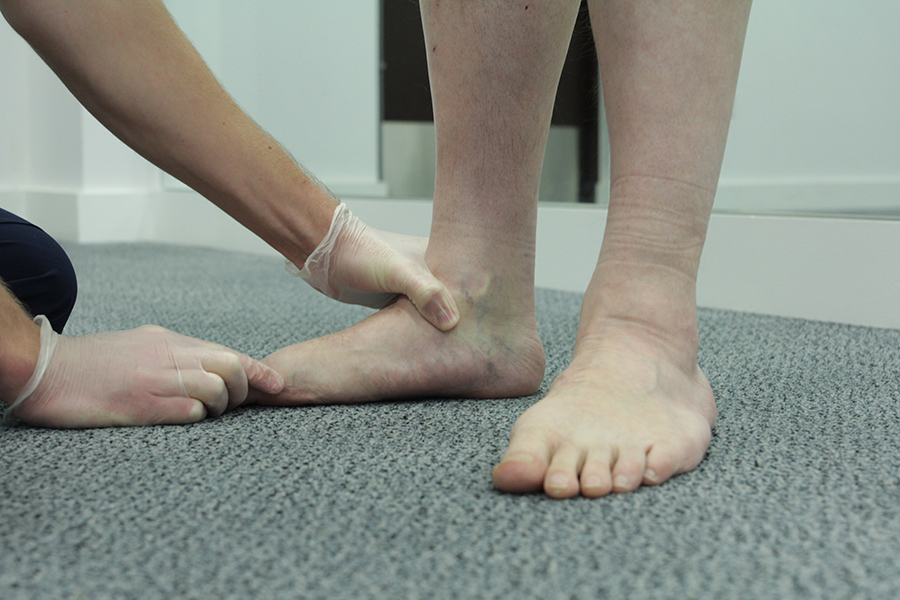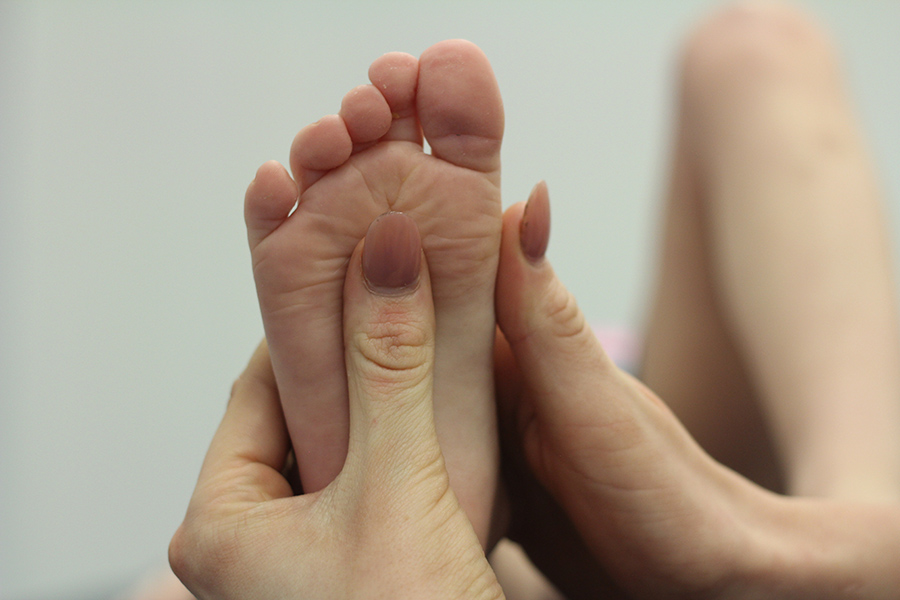Flat feet
Flat feet, also known as 'fallen arches', an over-pronated foot, or medically as Pes Planus, is a common foot posture complaint that is characterised by the flattening of the arch on the inside of the foot.
What are flat feet?
Flat feet occur when the arch of the foot is not present, or is reduced. For some people flat feet occur only when weight-bearing, meaning that the arch of the foot is present when the foot is not on the ground, this is called a flexible flat foot. For others the arch is flat when both weight-bearing and non-weight bearing, this is known as structural flat foot.
What causes flat feet?
Flat feet can be genetic, this means you were born this way and it is
simply the shape of your foot. Over-pronation is another cause, people who
over-pronate will have an arch profile when non weight-bearing, however
upon contact with the ground their foot over-pronates, or 'flattens'. The
cause of over-pronation varies from person to person however having lax
ligaments is a major contributing factor.
It is important to note that a flat foot is not necessarily an
over-pronated foot; pronation describes a movement that creates a flattened
foot, however flat feet can occur in those whose feet do not over-pronate.
If flat feet have developed later in life then the cause may be a ruptured
posterior tibialis tendon.

What are the signs and symptoms of flat feet?
The main sign of having a flat foot is having no arch profile when standing, an easy way to identify this is to look at your own foot print; if the entire foot is in contact with the ground and leaves behind a foot print then you have a 'flat foot'. Other signs may include the following:
- Knee pain
- Arch pain
- Heel pain
- 'Rolling over' of the ankle
- Distortion of the heel counter
Types of flat feet
Flexible Flat Foot
A flexible flat foot is one that has an arch profile when non
weight-bearing, but that disappears or 'flattens' upon standing.
Structural Flat Foot
A structural flat foot is one that is flat at all times, both when non
weight-bearing and when standing.
How are flat feet diagnosed?
One of our podiatrists will be able to diagnose the type of flat foot you have, and the cause based on a biomechanical assessment. A biomechanical assessment assesses the mechanics of the foot and the lower limb, this means looking at the way the leg and foot are functioning. The podiatrist will also perform a gait analysis, which involves examining the way you walk.
Benefits of podiatry for flat feet
If you have flat feet and you are experiencing problems the following benefits can be achieved following podiatric treatment and advice:
- Reduction in pain
- Improved gait
- Improved foot and lower limb function
- Prevention of future injury
- Reduced muscle tightness
- Improvement in muscle strength
What would podiatry for flat feet involve?
A visit to Chiropody.co.uk would begin with both an objective and a
subjective history, followed by an examination of the foot and ankle. Your
podiatrist would then perform a Biomechanical assessments, this
assesses foot and lower limb function, which will provide the podiatrist
with vital information as to the cause of your 'flat feet' and how this is
affecting other areas of the body. The information gained from the
biomechanical assessment is then used in order to prescribe a custom made Orthoses
(shoe insert), designed to improve the function of the foot and lower limb,
as well as reduce any pain associated with your flat feet.
Other treatments for flat feet include:

Summary
Flat feet are common, and for many people they produce no symptoms. For other people flat feet can be a great source of pain, anywhere from the foot itself to the leg, knee and back.
There are two types of flat foot: flexible and structural, and treatment is dependent upon the type of flat foot you have.
If you have flat feet and you think that they may be contributing to symptoms elsewhere then why not visit one of our podiatrists. Our podiatrists here at Chiropody.co.uk are highly trained in the diagnosis and treatment of a variety of pathologies relating to the foot and lower limb. They will explain your condition, the cause, and whet can be done, as well as provide you with a treatment plan specific to you.
To arrange an assessment with one our podiatrists please email office@chiropody.co.uk or call 0330 088 4222.
Save 5% by booking an appointment online.



We work with:

Individuals

Organisations

Health professionals
Get in Touch!
0330 088 4222
If you would like to speak to one of our specialists then please complete this form.
We are open 7 days a week








